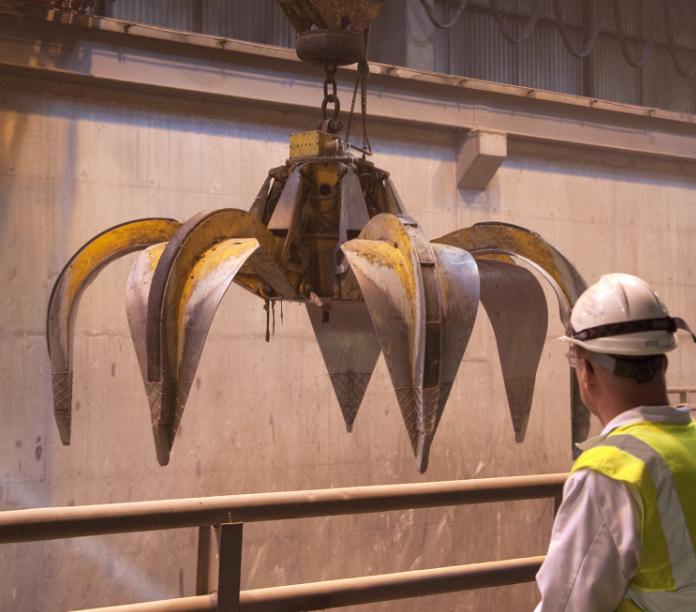The process
SELCHP receives waste from households and some businesses. Waste is tipped into a bunker, where a crane grabs it and places it into the feed hopper. It then drops down a feed chute onto a sloped grate, where it is constantly turned to allow all combustion phases (such as drying, ignition and combustion itself) to happen simultaneously and a constant high temperature to be maintained.
Ash from the burning process is transferred by an ash discharger and residue handling system to the ash pit. During the transfer, ferrous metals are removed for recycling and the remaining ash is sent for reprocessing into recycled material for road building or construction use.
Hot gases produced in the combustion process pass through a water tube boiler where they are cooled; the heated water is transformed into steam.
A turbo-generator uses the steam to produce electricity for export to the National Grid.
The gases from the boiler go through a complex flue gas cleaning process, involving the injection of dilute ammonia solution to reduce nitrogen oxides to nitrogen and water; lime milk to neutralise acid gases and activated carbon to absorb heavy metals and any remaining dioxins.
Finally the particulate matter dust is removed from the gas stream by a bag filter before the cleaned gas is released to air. The resultant material known as Air Pollution Control Residue (APC residue) is sent for disposal at a licensed hazardous waste site.


How the power is generated
Steam leaves the boilers at a temperature of 395°C and pressure of 46 bar, and is fed directly into a single 35 MW steam turbine generator. The turbine rotates the generator to produce electricity. Steam from the turbine is also used to pre-heat the combustion air for the waste burning process. Finally, through some bleed lines on the turbine, hot steam is extracted and used to provide heat to the District Heating System.
A bank of air cooled condensers condense the exhaust steam from the turbine and recycle the water back into the process. Electricity is generated at 11kV and transformed up to 132kV for export to the London Electricity system which passes very close to the SELCHP facility.
No supplementary fuel is required to maintain combustion, just refuse and controlled addition of air.

